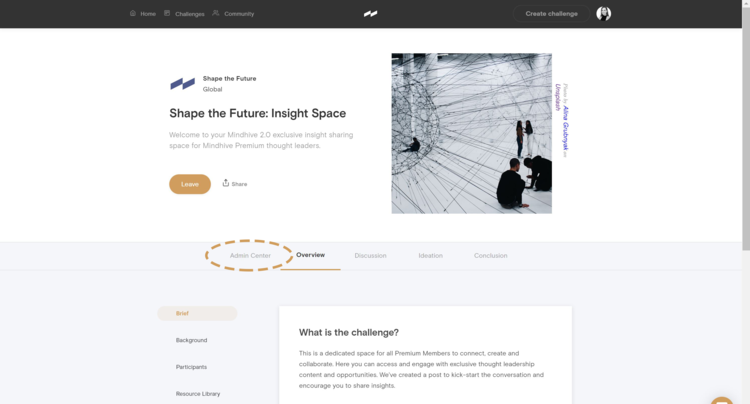What is Crowdsourcing?
Simply put, crowdsourcing combines the aspects of knowledge gathering and democratic deliberation, and in this way, provides a path for knowledge-sharing and space for debate that can impact problem-solving and insight.
It produces useful information about an issue and a deliberative setting that involves more people in the discussion of the problems benefits you from your team to the broader society. However, crowdsourcing relies on a sincere commitment from the process initiator for its success and failure. Crowdsourcing needs to be agile and capable of reacting quickly to incidents that may reduce the effectiveness of the process. Here we discuss several factors that help to determine the degree of success in the crowdsourcing process:
How do I run a successful crowdsourcing project?
It is essential to design an individual-centric, user-friendly crowdsourcing process. It is necessary to have a clear understanding of the desired outcome/s of the process. What is the crowdsourcing process expected to generate? It is the goal of the process which shapes the timeline of the process as well as its sequences. The project needs to convey with clarity the purpose of the process, the activities that the users are required to take part in, and the consequences that are likely to result.
The key to crowdsourcing: communication.
A crowdsourcing process does not come into effect on its own. It is neither automated nor cannot "take off" immediately after launch. The success of a crowdsourcing process depends on the level of awareness that is created right from the commencement through to the completion of the project. Participants are contacted via several platforms, including social media, events, blogs, mainstream media, and networks. It is through the establishment of active communication channels in a wide range of societal fields that participants are invited to join the crowdsourcing process. These same methods also allow for existing members to be updated regarding progress and developments. Crowdsourcing introduces a new culture, and it is evident why the first crowdsourcing processes often fail to generate a remarkable degree of participation. It takes time for people to become cognisant of a project and comfortable enough to participate.
What makes a good crowdsourcing platform?
User-centricity is the fundamental approach adopted during the designing of the user interface. Participants may not have previous experience in crowdsourcing, and hence, the technological platform should build on simplistic, familiar. To allow for changes and adaptation during the project, the platform must be constructed with flexible technical applications. Take Mindhive for example, our simple to use platform allows for organisations and individuals to create challenges and facilitate these discussions. We make sure to adopt these design principles so that we can continue to foster our globally crowdsourced community and provide insights in the questions that matter to you.
Managing a Crowdsourced discussion.
The active online presence of the organisers is one of the most powerful drivers of a crowdsourcing process. The crowdsourcing community demands responsiveness continuously, and the conversation that happens on the platform must be continually reviewed by responding to queries promptly, deleting inappropriate content and segregating ideas and comments into different categories. This demands the involvement of human resources. It is the responsibility of the curator to monitor adherence to the Code of Communication (an agreed-upon code of conduct regulating participant interaction with the project and each other). The platform must be equipped with a feature which allows for the categorisation of topics that are not related to the scope of the crowdsourcing process to prevent the conversation from deviating too far from the central point of investigation.
How long should I run a Crowdsourced project for?
A crowdsourcing process must be designed with a specific time frame, one that is clearly communicated to the participants. Participants are more likely to engage with a time-driven process than an open-ended project. If a crowdsourcing process comprises of several stages, the duration of each step should be specified clearly. The methods used in the crowdsourcing process may need to be modified based on the goals and the type of crowdsourcing deployed. A crowdsourcing process may take the form of a short, intense campaign stretching only a matter of a few weeks. On the other hand, there may be projects, such as efforts to gather signatures for petitions, which may remain open for several months. When a crowdsourcing process stretches longer, interim reports and summaries about the outcomes must be published.
Measuring the success of your Crowdsourced discussion.
Analysis of outcomes during and after the process forms an essential ingredient for the success of the crowdsourcing process. After the completion of the crowdsourcing process, the issues are compiled in the shape of a report and published online. This allows the participants to give a final round of feedback and see how the overall story is received amongst other members. After completion, spreading information about the next step becomes critical. It is essential to report success and implement recommendations or actions from the report, failing to do so fails to take advantage of the more significant by-product of crowdsourcing – an engaged, committed and proven crowd of participants.
From Mindhive Founder, Bruce Muirhead's crowdsourcing book How Collective Insight Can Create a Better World.
Want to learn more about crowdsourcing? Check out this fantastic blog series by crowdsourcing week.
Product Community
Join the Mindhive Product Community for development updates and become part of the Product Team to help shape Mindhive.
Next steps
Mindhive is a platform that facilitates discussion on topics that affect you – and what we can do about it.
Join a discussion and lend your voice
Mindhive is used in research, government, community groups and consultancies to canvas a wide spectrum of voices to surface sentiment, insight, and the unexpected.



